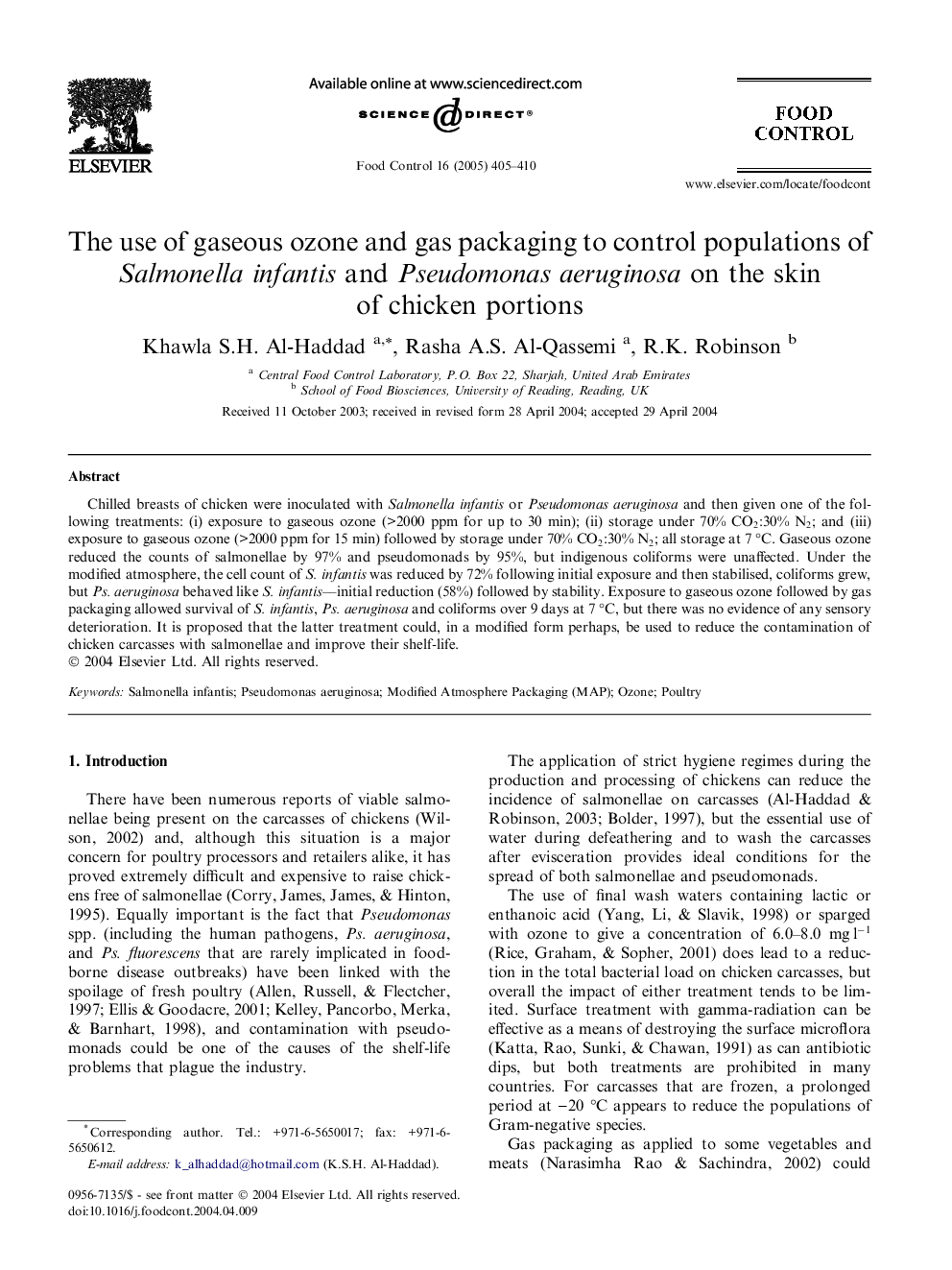| Article ID | Journal | Published Year | Pages | File Type |
|---|---|---|---|---|
| 9486985 | Food Control | 2005 | 6 Pages |
Abstract
Chilled breasts of chicken were inoculated with Salmonella infantis or Pseudomonas aeruginosa and then given one of the following treatments: (i) exposure to gaseous ozone (>2000 ppm for up to 30 min); (ii) storage under 70% CO2:30% N2; and (iii) exposure to gaseous ozone (>2000 ppm for 15 min) followed by storage under 70% CO2:30% N2; all storage at 7 °C. Gaseous ozone reduced the counts of salmonellae by 97% and pseudomonads by 95%, but indigenous coliforms were unaffected. Under the modified atmosphere, the cell count of S. infantis was reduced by 72% following initial exposure and then stabilised, coliforms grew, but Ps. aeruginosa behaved like S. infantis--initial reduction (58%) followed by stability. Exposure to gaseous ozone followed by gas packaging allowed survival of S. infantis, Ps. aeruginosa and coliforms over 9 days at 7 °C, but there was no evidence of any sensory deterioration. It is proposed that the latter treatment could, in a modified form perhaps, be used to reduce the contamination of chicken carcasses with salmonellae and improve their shelf-life.
Related Topics
Life Sciences
Agricultural and Biological Sciences
Food Science
Authors
Khawla S.H. Al-Haddad, Rasha A.S. Al-Qassemi, R.K. Robinson,
